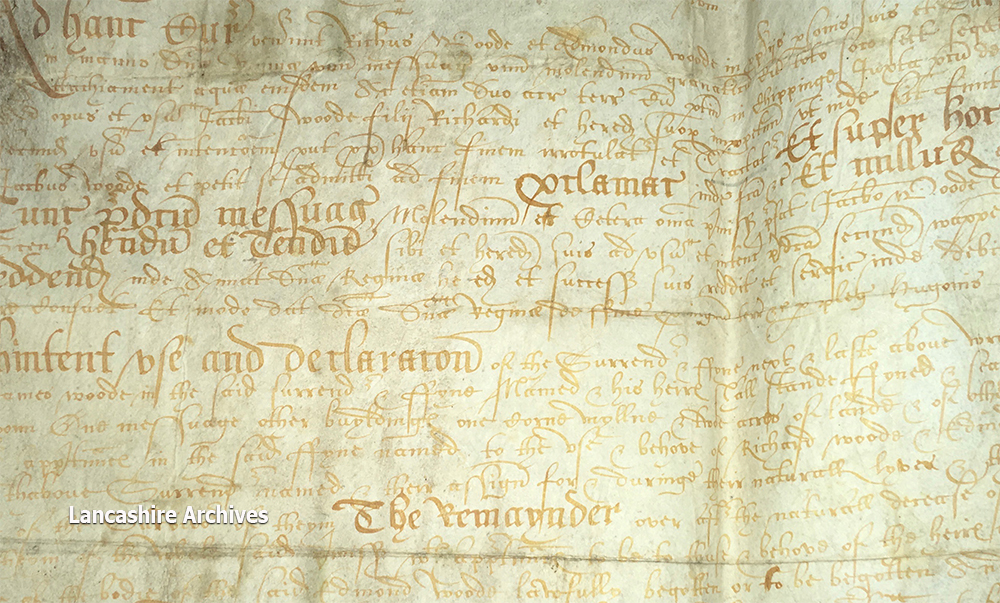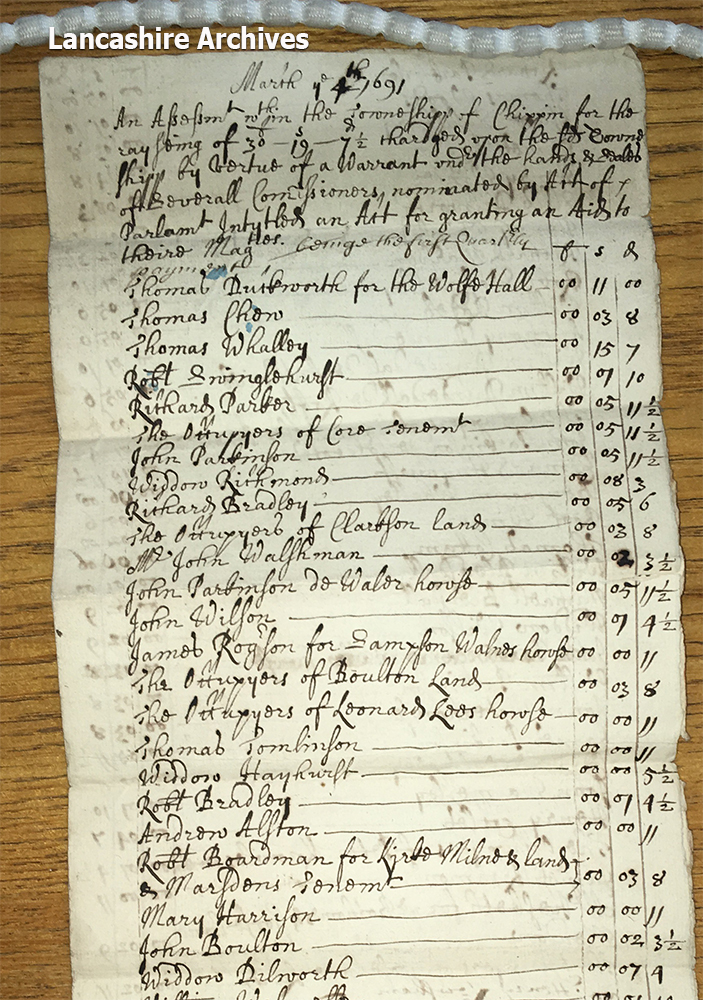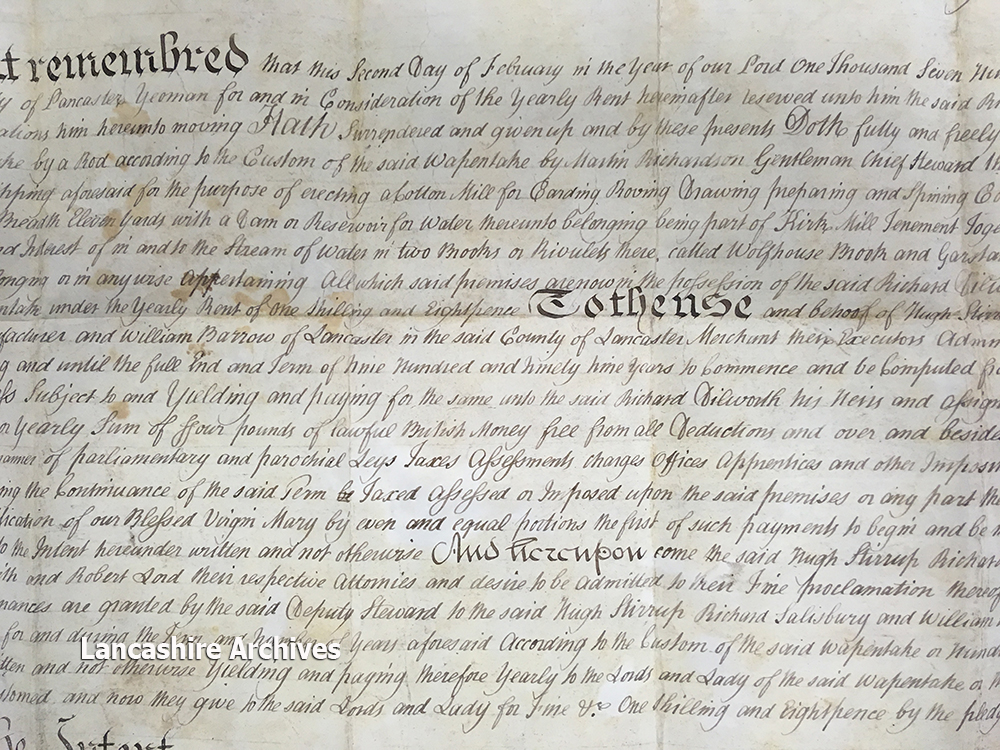Chairmaking, cotton spinning and weaving were domestic activities in Chipping. First documentary record of Kirk Mill in Chipping. It is mentioned as a water corn mill. The document shows that John, son and heir of Eustace Hesketh and Jane, his wife surrender the property to Richard and Edmund Wood. 5th October, 1579, Richard and Edmund Wood draw up document transferring ownership to James Wood. They have the use of the mill while they remain alive and use then passes on to James Wood and heirs. In 1619 the Kirk Mill property is described as “one only water corne Milne and two acres of land or thereabouts being Wapentake Copyhold lands…yearly rent 6s 8d in the tenure..of James Wood…” Lancashire Records – DDX 132/1 p29.5 2nd September, 1641, sold for £250 “one water corn mill, together with a parcel of mossey ground called Blackmosse,” parcel of the manor of Chipping, to Richard Sherburne of Wigglesworth, Esq. (Tom C. Smith, History of Chipping, 1894) In 1691, Robert Boardman, miller, paid a rate of 3s 8d “for Kirk Milne & land & Marsdens Tenem’t”. Chipping Rate List,1691. LRO ref. DDK 771/73B. Will and inventory of Robert Boardman of Chipping December 25th 1701. LRO WRW. Died January1701/02 Kirk Mill sold to Hugh Stirrup, John Shakeshaft, Richard Salisbury and William Barrow to form first cotton spinning company Kirk Mill owners bankrupt, first cotton spinning company put up for sale Kirk Mill was auctioned in Preston on 25th June, 1789. Bought by Peter Atherton and his son in law Ellis Houlgrave cotton manufacturer, Houlgrave agreement with Weld to build corn mill other end of Chipping to divert Leagram waters and improve supply to Kirk Mill. This was Chipping Mill Kirk House built The second cotton-spinning company came to an end and was put up for sale The third cotton-spinning company is set up by J. Bury and Co. The third company was sold and the fourth company established by Routh, Middleton & Co. Factory Act passed Grove row built as workhouse – Aspin, p.133 Reports into 1819 Factory Act showed 2 mills at Chipping worked 78 hours a week with no breaks. Free accommodation. Evans employed 10 men, 7 boys 24 women, using ‘Crompton’s Mule’ – technology of the age. (Crainer, 1984) Report on conditions at the mill reached Home Office. Mill now owned by Middleton, Rooth & Co. “There are 74 persons employed, of whom several are under 9 years of age. They work 78 hours in the week. The workpeople have their breakfasts brought to them in the factory, and the machinery is not allowed to stop whilst they eat it. They have 40 minutes allowed for dinner. The interior walls and ceilings are whitewashed once a year. There is not a copy or abstract of the Act of Parliament here. All the children go to Sunday school” – Aspin, p.138 Abbot of Whalley notes that in early times, the inhabitants of the area were “few, untractable and wild” and there were “multitudes of foxes and destructive beasts” He dismissed Chipping as “inaccessible to man” (Crainer, 1984)1519
1544

1579

1619
1641
1691

1701
1785

1787
1789
1792
1793
1799
1801
1808
1819
1823
1823-4
1824
1830
Timeline